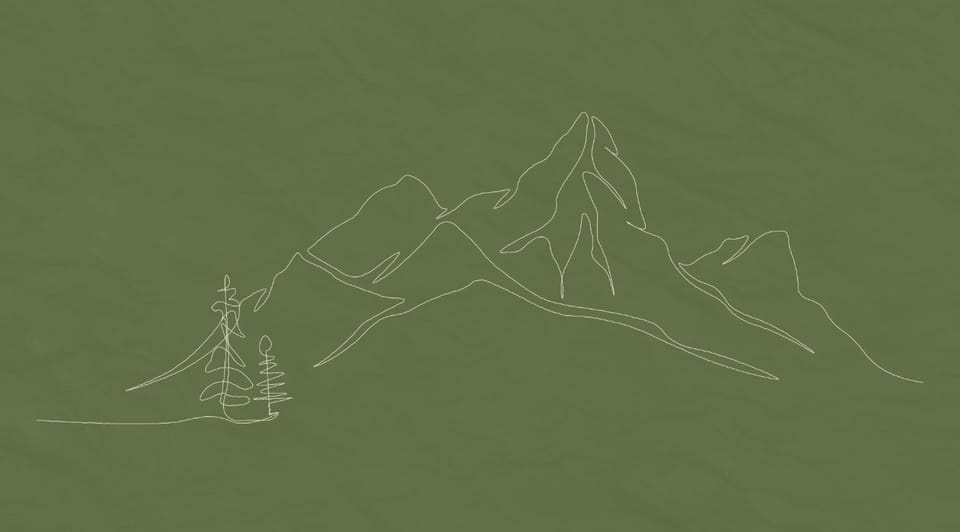Adobe Neo vs Blender
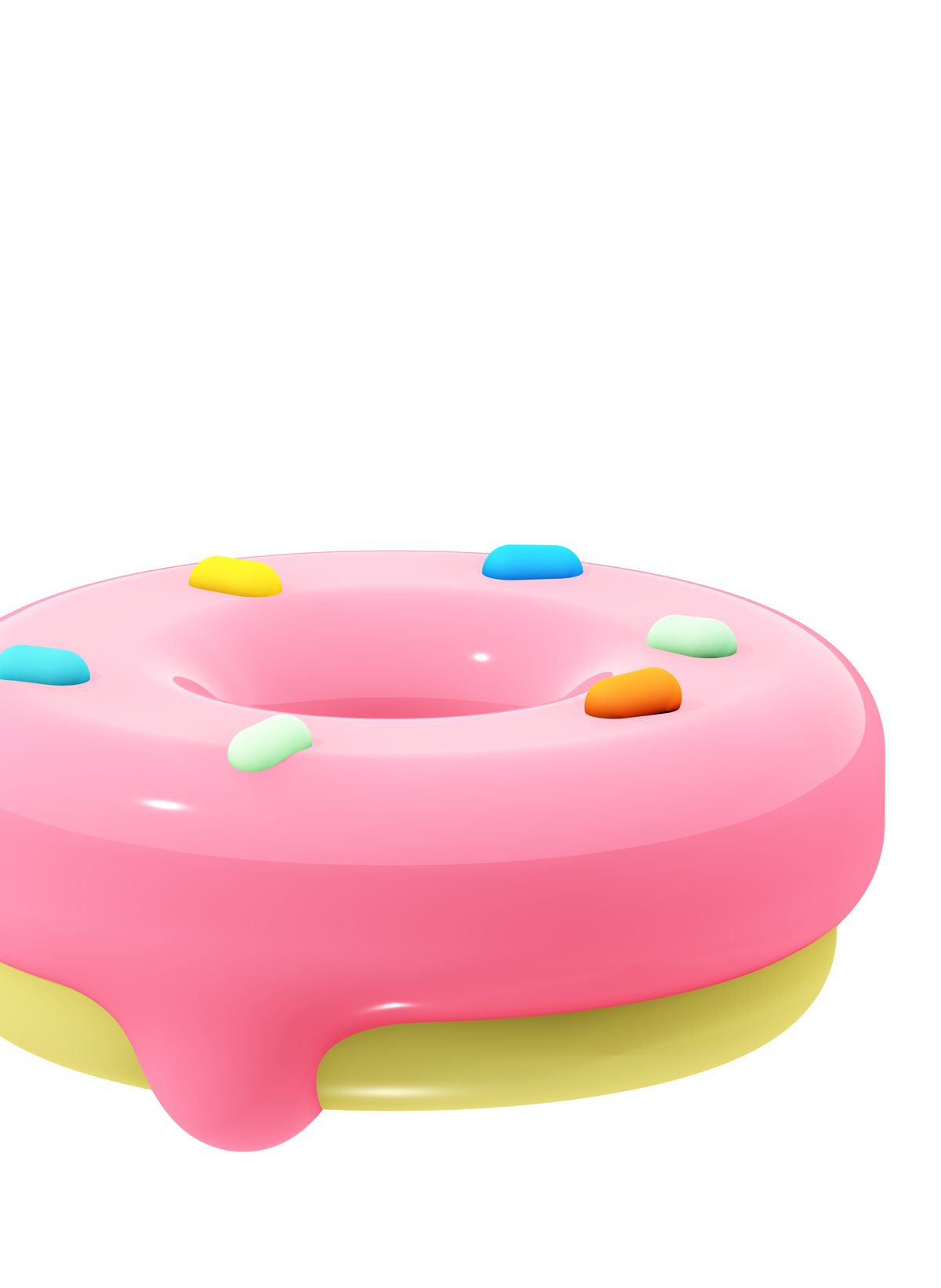
As someone who loves the outcomes of 3D modelling, but has never been able to dedicate the time to learning the complex softwares that require it, Adobe Neo's beta release was hugely exciting to me. 3D modelling softwares such as blender and Cinema4D utilise a language exclusive to modelling. To me, it makes 3D modelling an intimidating community to be a part of, from the get go, the software couldn't be less welcoming.
Adobe Neo, on the other hand, takes a new approach, an 'Adobeified' approach to 3D modelling. This felt like it could revolutionise the process for me, and make it finally feel accessible, as Adobe's language is something I feel very fluent in.
I decided, as someone who admittedly, hadn't given Blender much of a chance, that I would try to create the same thing in both softwares. I chose a doughnut, because I knew it was the go to thing to learn in Blender.
First, Adobe Neo, because I was excited to use it.
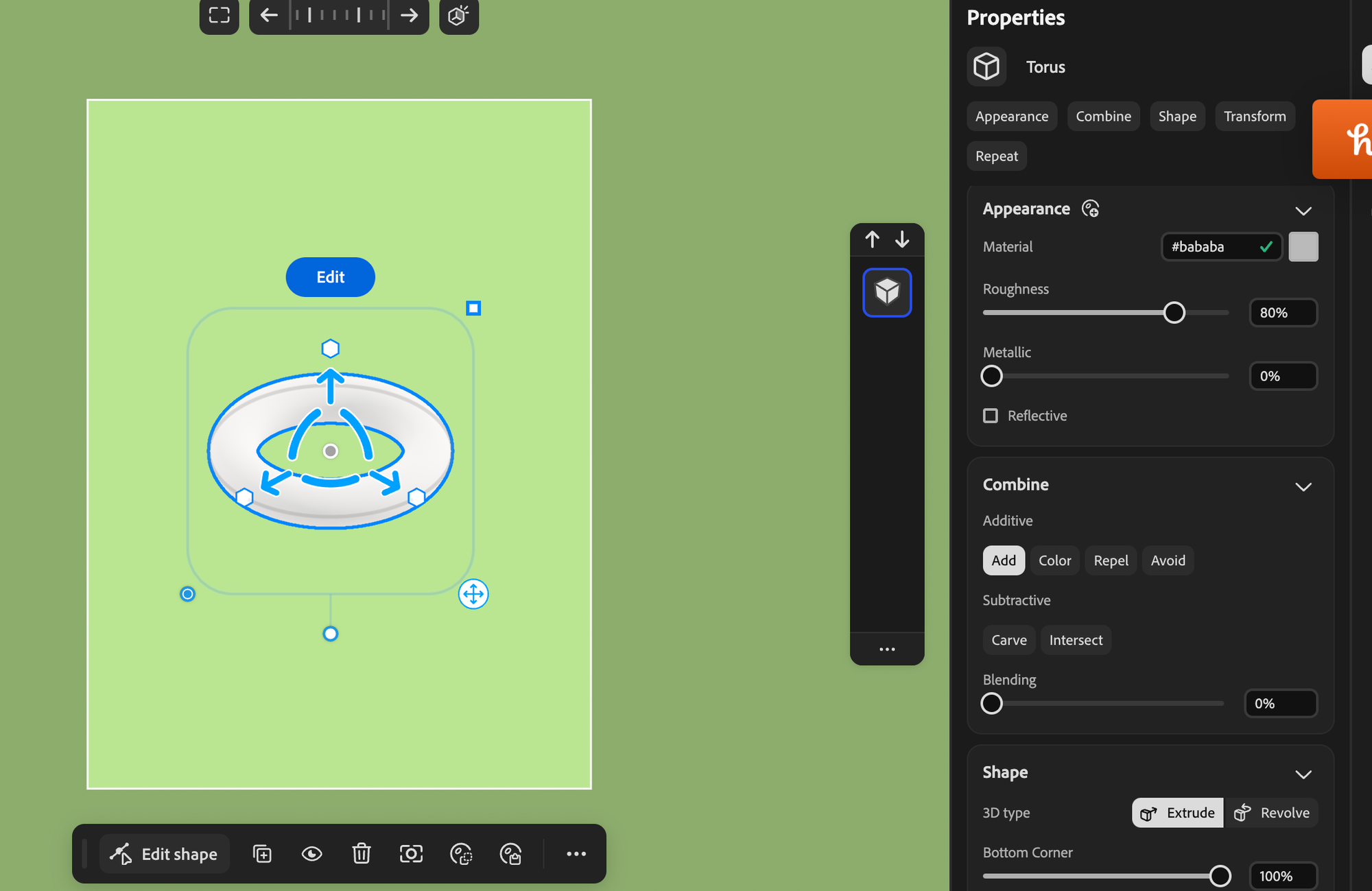
The same basic language was still used, but it felt more digestable. I added a torus to the space given to me, and after a few fumbles with navigation controls, I picked up how to navigate the 3D space. One I had added the torus, I could use a slider the choose the thickness of the torus, which was easily accessible and though I was following a youtube video, I didn't feel the need to keep looking to the video for every single step.
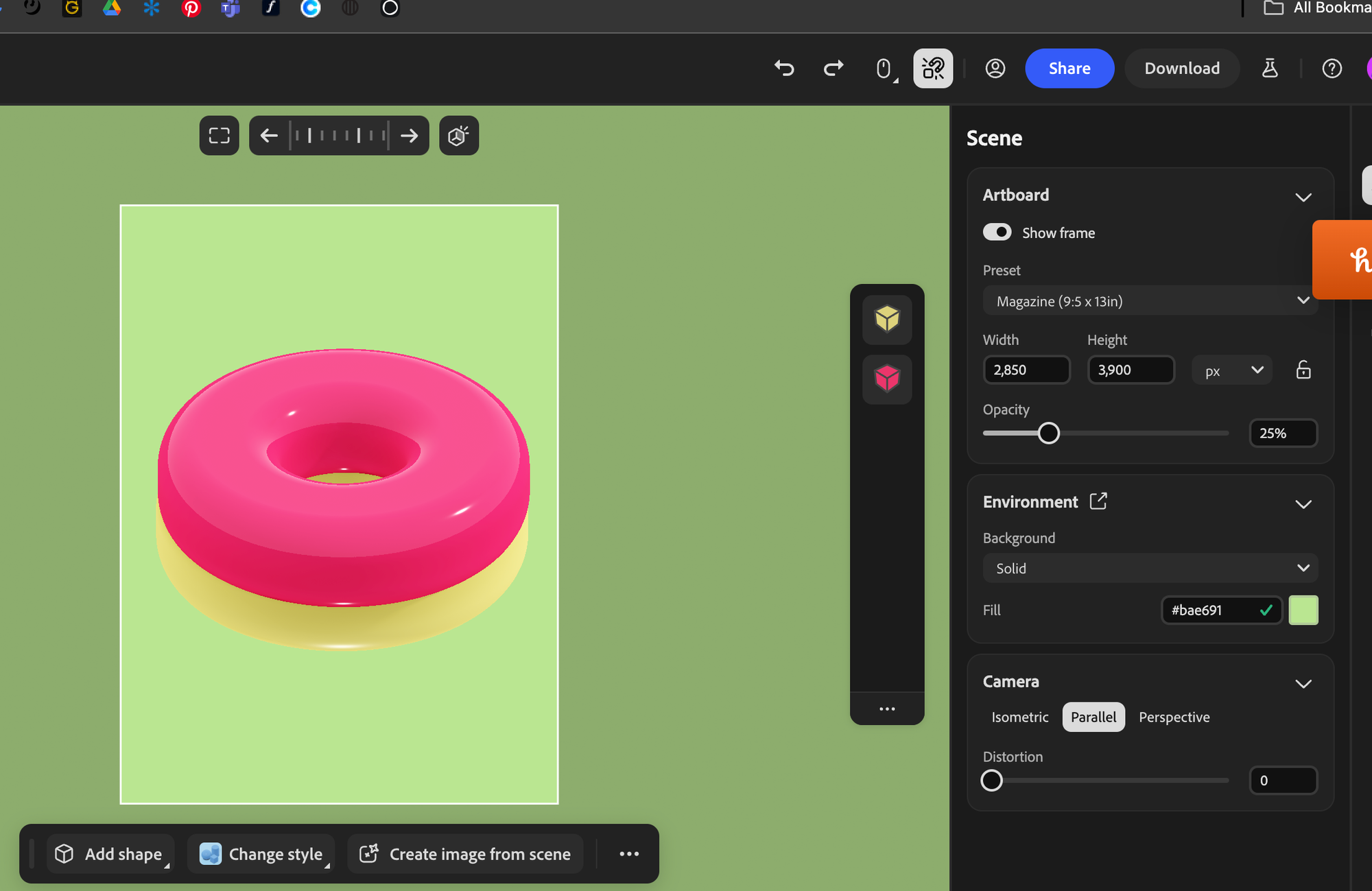
I could duplicate my torus to add the icing layer on top of this. The materials and colour panel was a game changer, it didn't feel difficult to customise the appearance of my shapes. I made the icing layer more glossy by reducing the roughness through a simple slider, which added contrast from the dough layer beneath it.
The shapes interacted well together, and I could morph one shape into another without clipping.
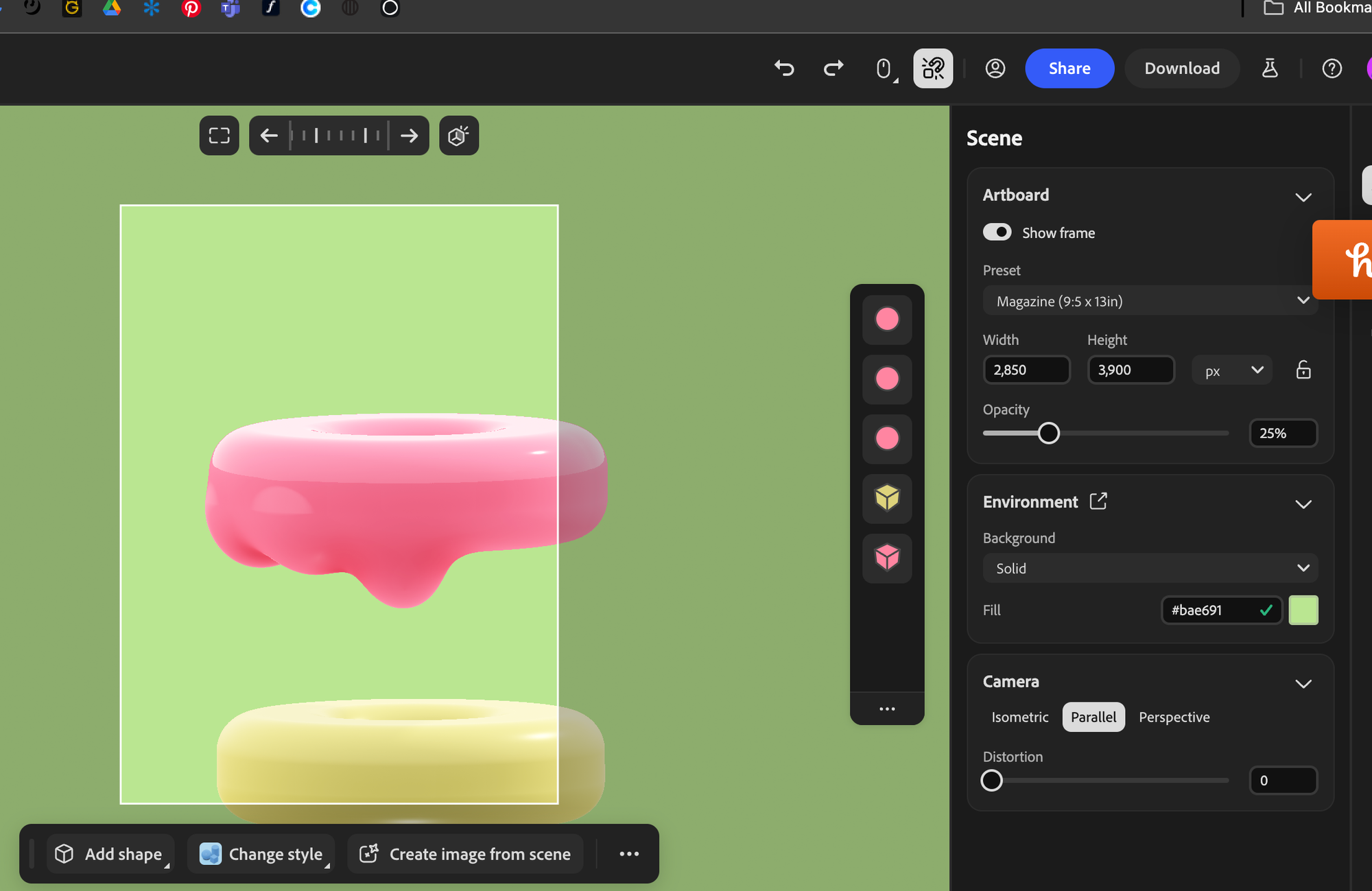
By simply moving the icing layer up, I could then add spheres underneath the icing torus. What a hugely impressive feature was the blend feature, I could morph the spheres into the Torus seamlessly. Admittedly, a setback with this was that the blend had a strange transparency effect at first, but it was easily changed by cutting and pasting the torus. It seemed like a bug that I assume, will be picked up on when the software is out of Beta.
All through this process, I couldn't get over how clean and lovely the shading looked, alongside a simple interface. It was a huge difference to the clunky appearance of both Blender and Cinema4D.
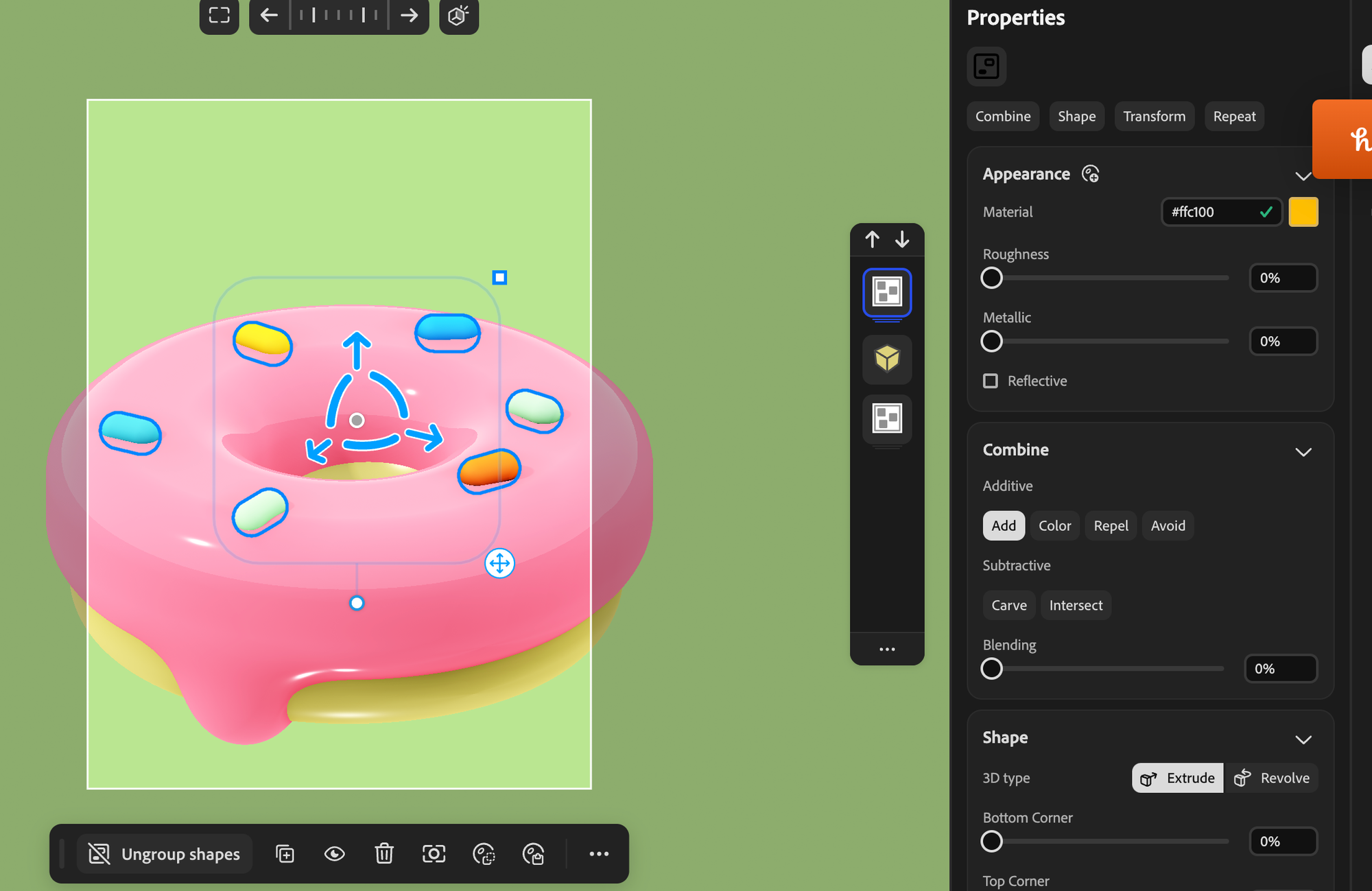
After the icing was added, I needed to make sprinkles. By this point, I had stopped taking guidance from the youtube video, there was no need for it, it just felt instinctive. I took the capsule mesh from the shapes bar, and copy and pasted it a few times, changing the angles, and then placing them atop of the icing. It felt like a video game, like it was actual fun, instead of the arduous frustration I'd had with 3D modelling before.
All the shading and rendering, even the materials for what I wanted was done for me, and I could download my doughnut as a png, with or without its background. One thing I couldn't do, which I found limited the software, was download the physical model. I had hoped to be able to import a model into adobe aero, but unfortunately, this wasn't quite possible.
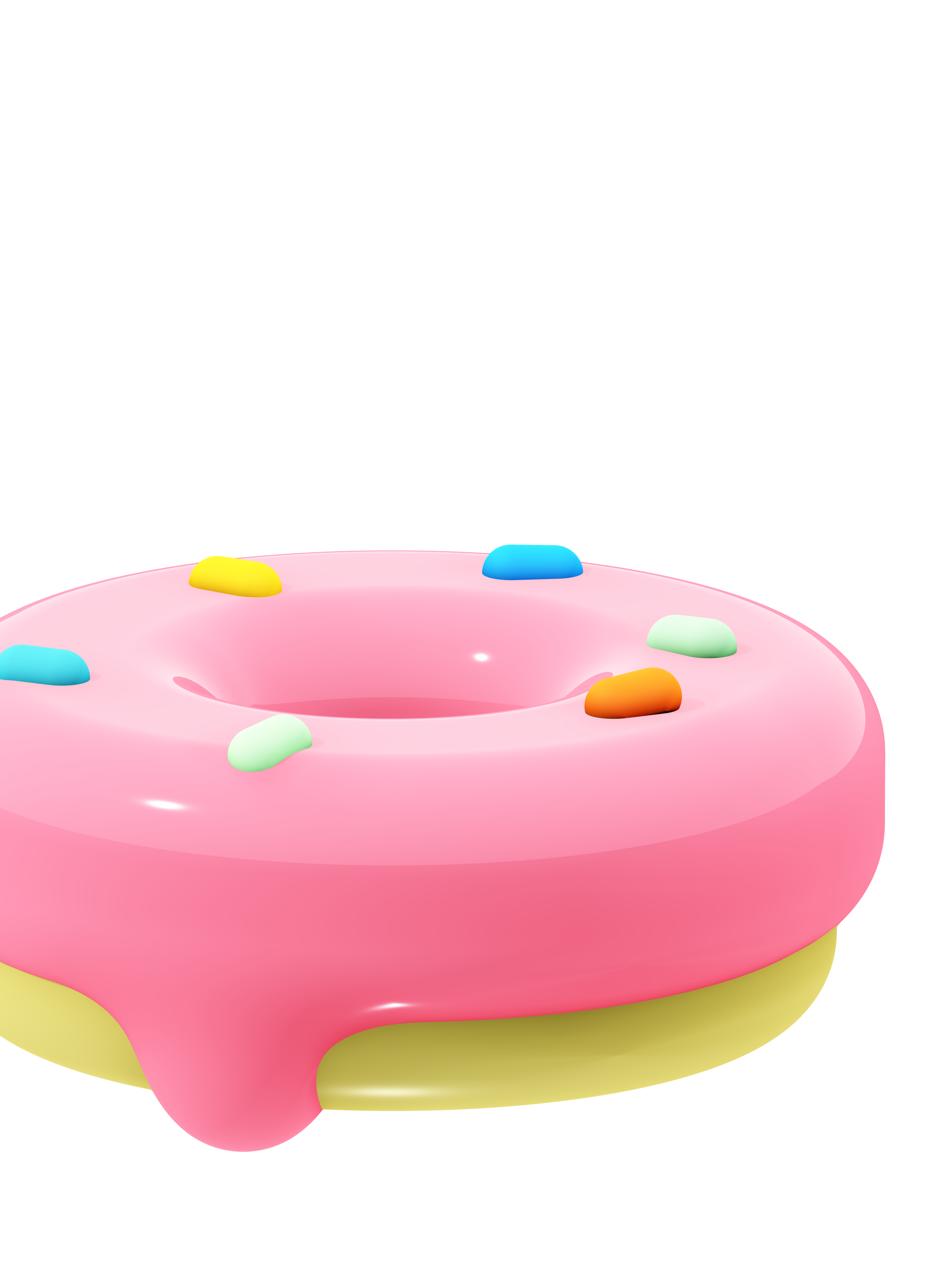
The outcome, I think, is lovely, and took about 15 mins to complete, including the teething problems of getting used to navigating the software.
Now, onto Blender, which as expected, was not so easy. I followed a tutorial that boasted I could 'make a doughnut in under a minute!' - I knew going into this it was wishful thinking.
This isn't to say Blender is a bad software, I have seen the capabilities of it, and know what people can create, the bugbare of it, is the amount of hours needed before anything of quality can be made.
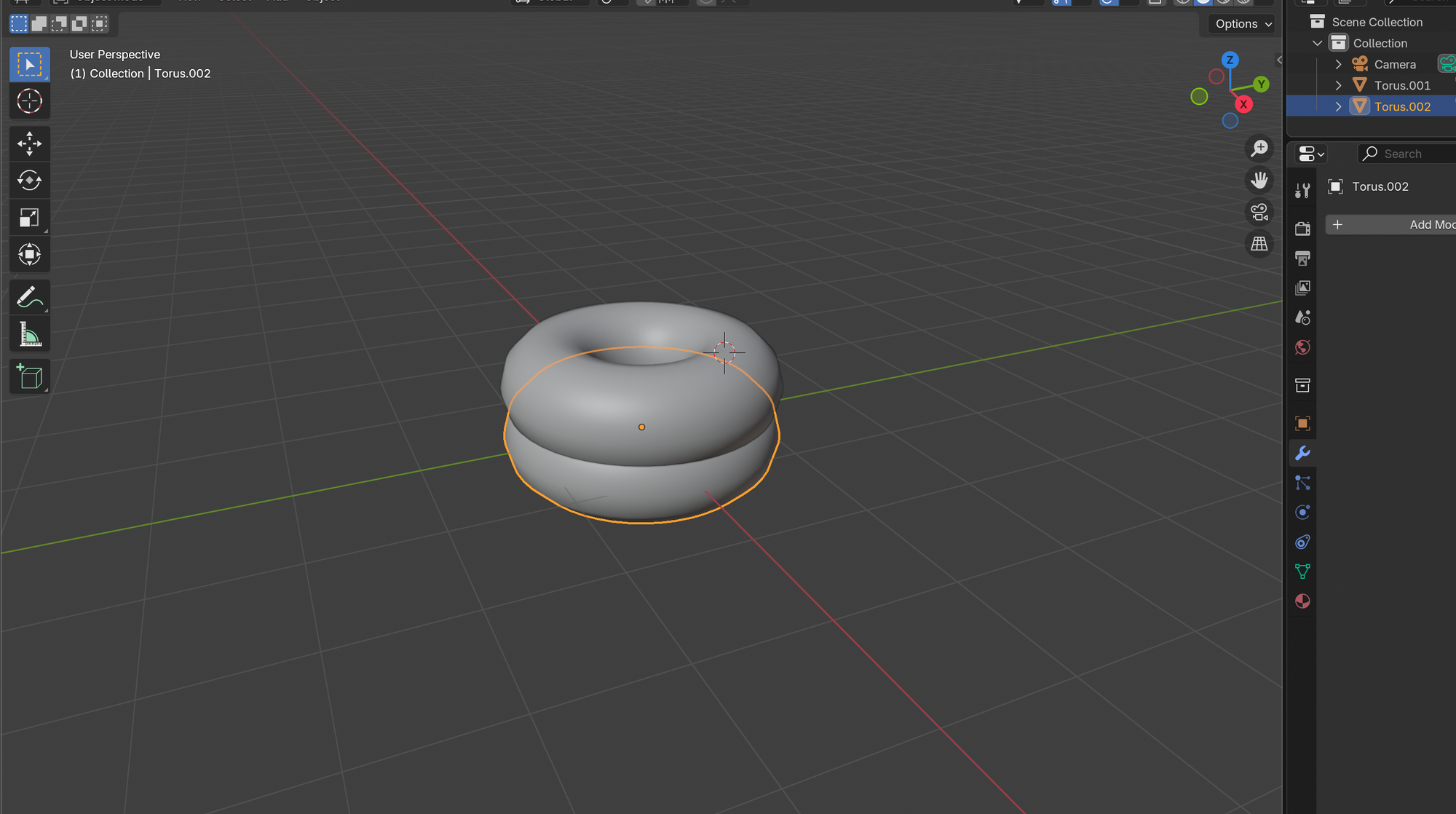
I started off, as with Adobe neo, with a Torus shape. I had to go into the 'Add Torus' settings, which as far as I could tell, only appeared as the Torus was added, and could not be easily accessed at any other time. With these settings I had to set the inner radius to 0.5 to make the Torus thicker. And then, I had to press cmd+2 to add subdivision properties. I still have no clue what this does, and was none the wiser by the end of this experience. This was the first show of how Blender's language makes it unapproachable to a newcomer. Regardless though, these are the technicalities it can be very much argued an experienced 3D modeller needs to know. As with Neo, I duplicated the torus and raised it's height.
Navigating the space was very similar to Neo, a few hiccups, but I understood it soon enough.
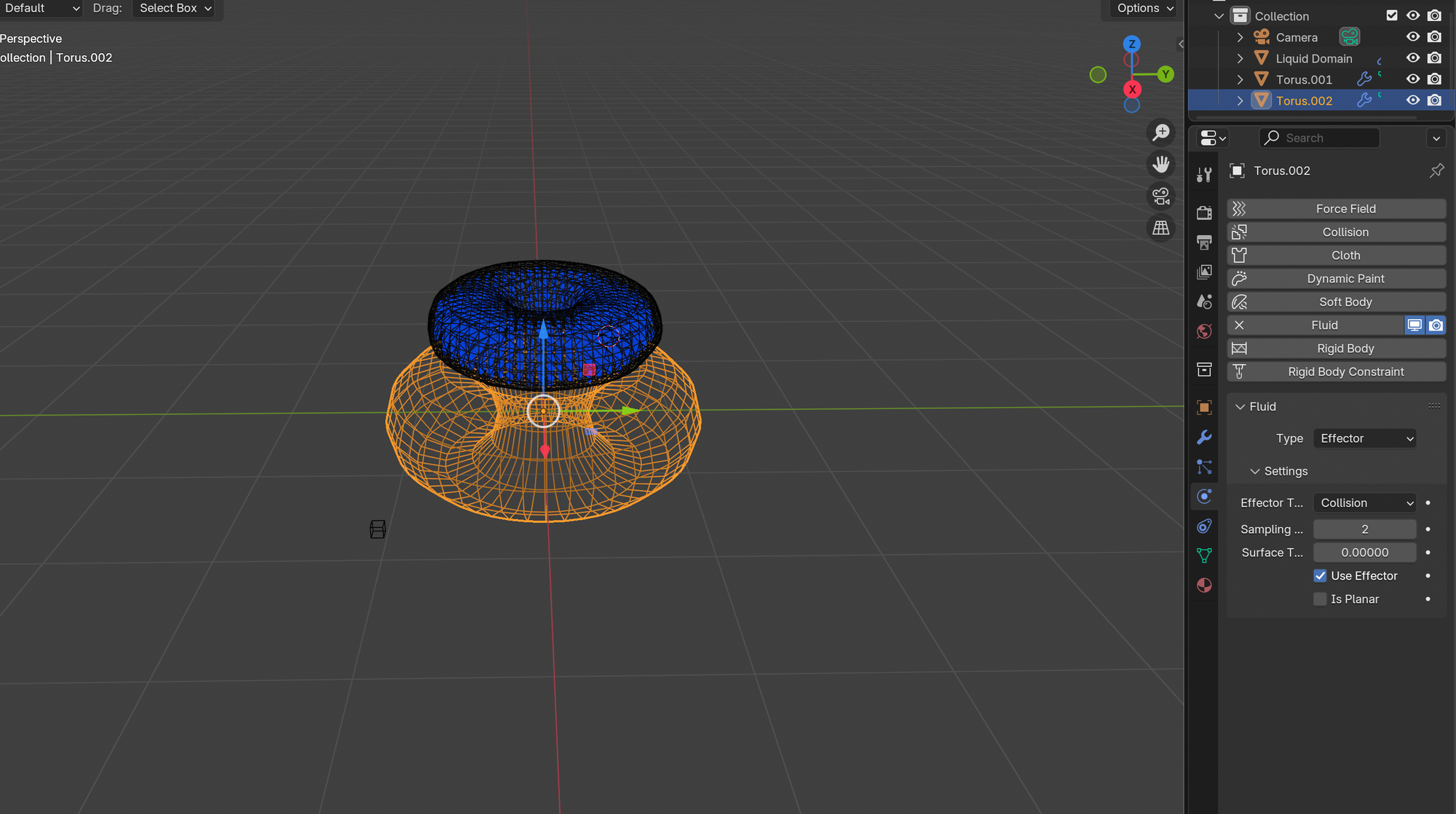
The way in which the video tutorial I was watching suggested I create the icing layer was by creating a 'Liquid Domain'. I feel I could have used my spheres technique used in Neo, but I felt if Blender could offer a more authentic looking icing effect, it would be great to give it a go. I had to turn the lower torus into a 'Rigid Body' something I was used to from Cinema4D, and from what I can gather, it makes the object something that stays in place whilst effects happen around it.
I had to change a few numbers, and a few settings, that meant virtually nothing to me, but I felt I was getting a basic understanding of what the steps were striving for me to do.
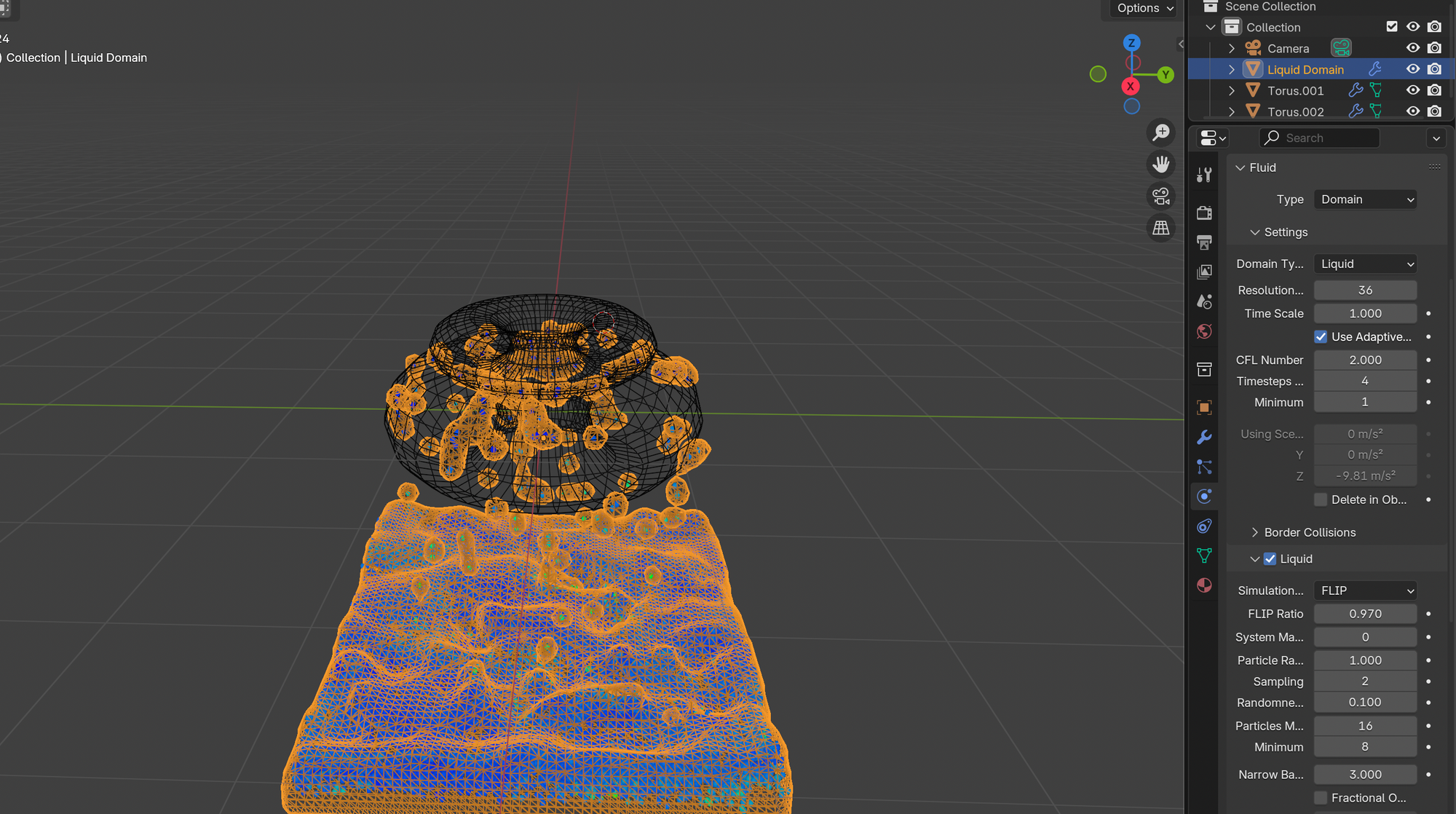
I then had to 'play' the animation of the liquid effect I had added. The first time, this didn't go too well. The liquid didn't fall the way I'd hoped, and I had to restart the whole thing for fear I'd missed a step.
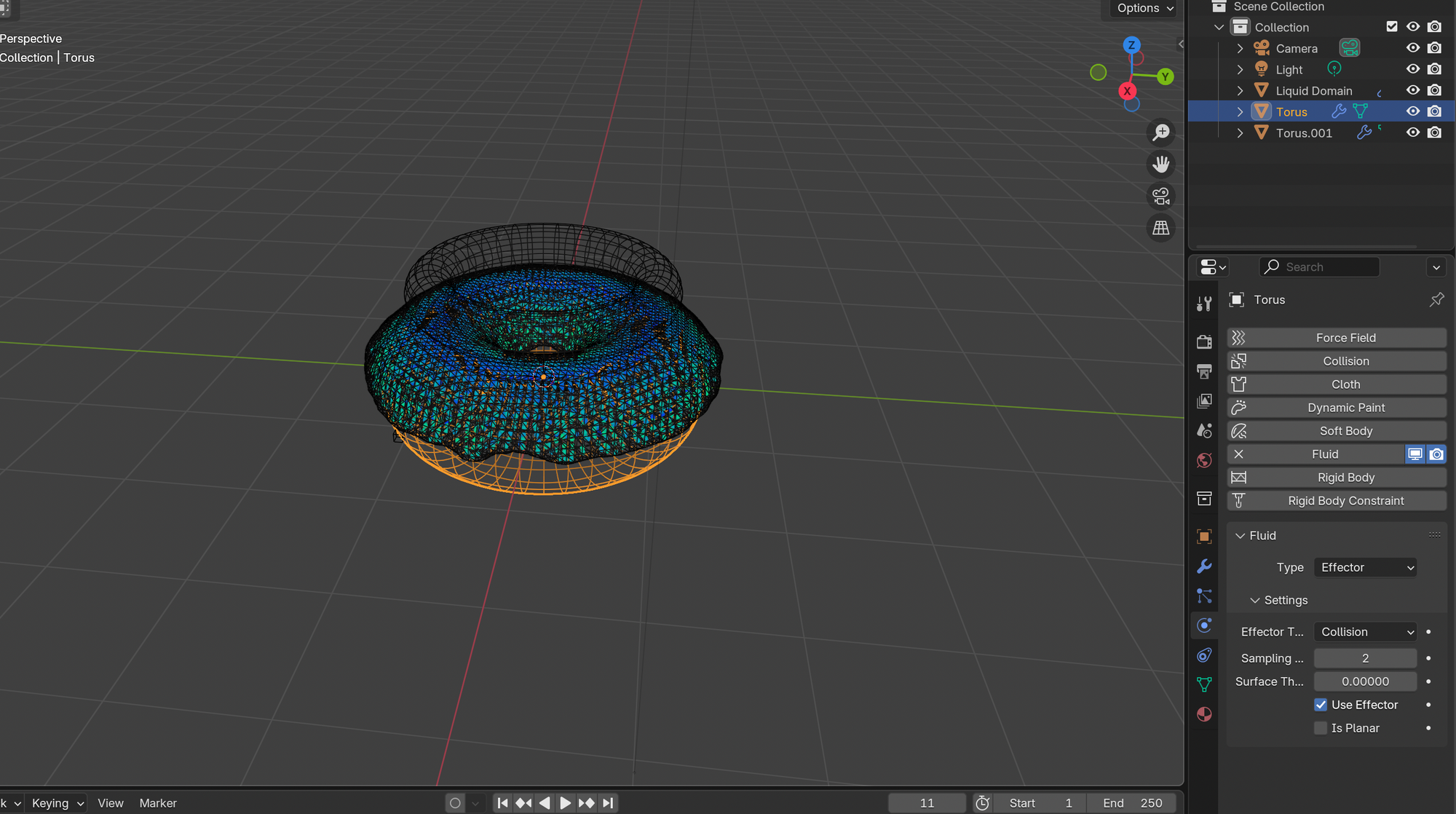
Second time, the liquid fell better, and I was able to pause the animation at a prime spot. I liked the way it was looking. Already, I had a more realistic approach to a 3D modelled doughnut. My setback at this point, was that I couldn't figure out how to show this object as a solid, not a mesh.
A quick google showed me that pressing 'Z' brought up an array of options for how to view the model, this is something I didn't have to tackle in Neo, but I could see at this point that Blender was offering more features, and therefore these extra technicalities were perhaps necessary to ensure a more experienced user had more range of use.
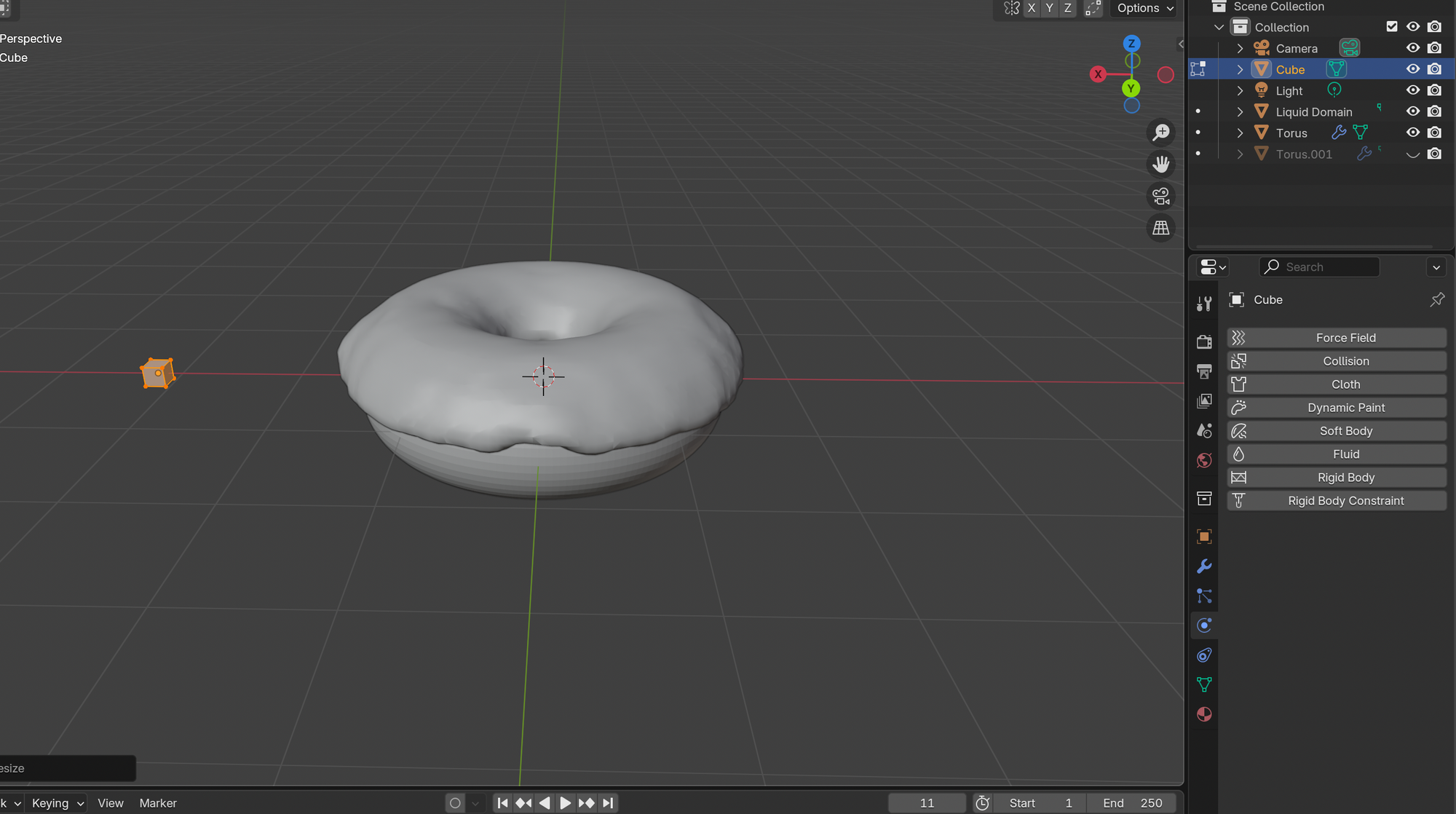
Now I could see the doughnut take form, I was feeling optimistic about it.
The next step was adding sprinkles. I took a cube, adjusted the width of it so it became a rectangle, and then as my Youtube video instructed, I pressed cmd + 2 again and it suddenly made the cuboid have smoothed edges. I felt not having any real control or knowledge to what I was doing a real setback, I was relying on the video for every small step, and unlike with Neo, I couldn't just get on with making something I liked.
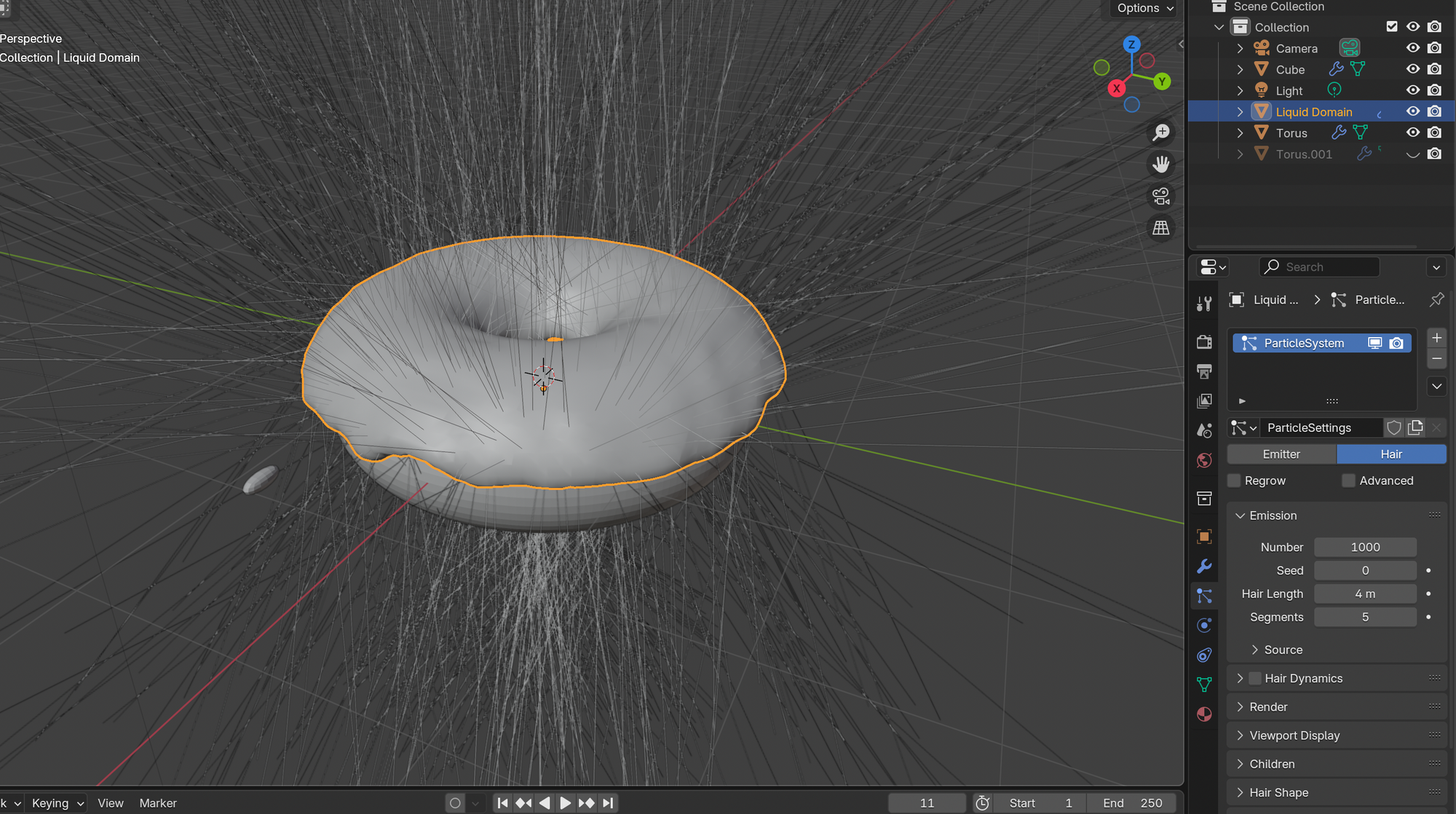
I then had to add a particle system to my icing, mess with more settings, and eyedrop the sprinkle model I'd made as the particle that would be applied to the icing. I liked this process, it made sense to me, even if I was following the video frame by frame.
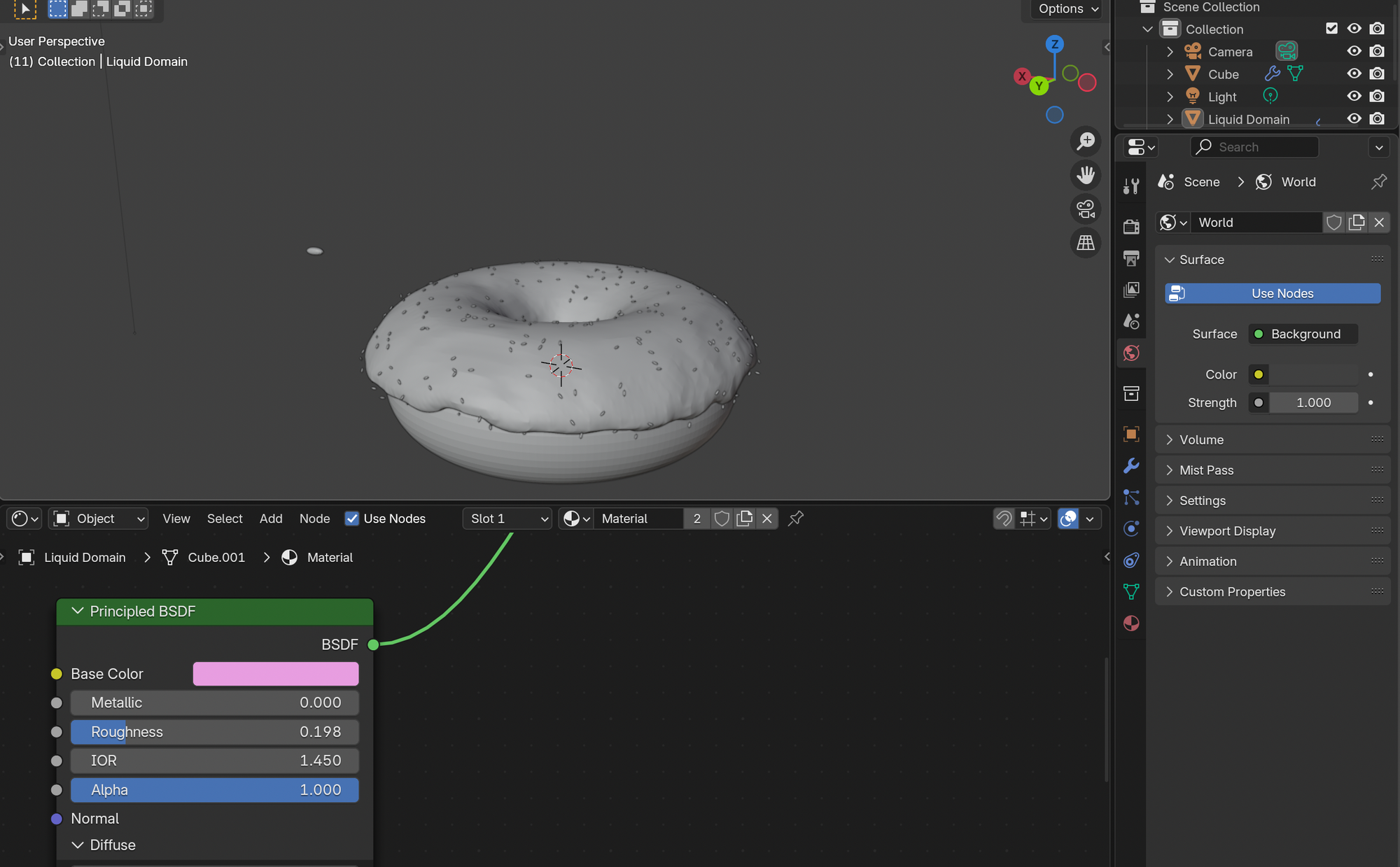
My sprinkles look like sesame seeds. But getting to this point was a lot of effort, and I'd hoped that adding colour would bring it all together.
My youtube video however, had cut that bit out, and I was left to figure it out for myself. A few google searches here and there, and was thoroughly confused.
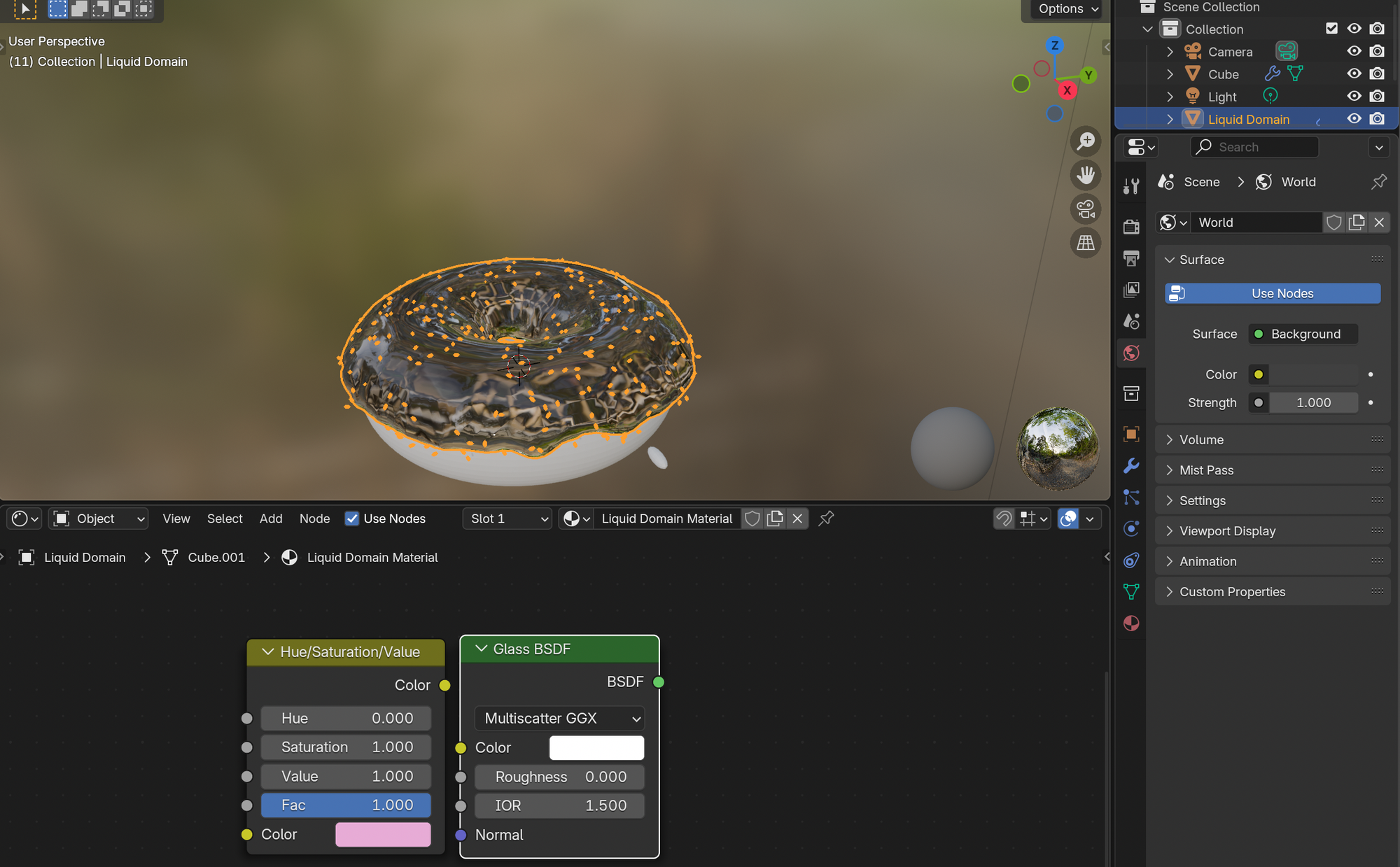
Because my icing was made with a Liquid Domain, Blender automatically assumed it needed a water-like, reflective material. I couldn't figure out how to change this, and suddenly I was incredibly out of my depth with the software again.
After the happiness I'd had with the outcome of my work with Adobe Neo, this was disheartening. And I just chose to accept a very plainly coloured doughnut as my final outcome. Perhaps had I have taken a different approach and not chosen the liquid domain approach to making the icing effect, this process would have felt easier, but the materials panel still appeared incredibly baffling to me, as it had done with Cinema4D also.
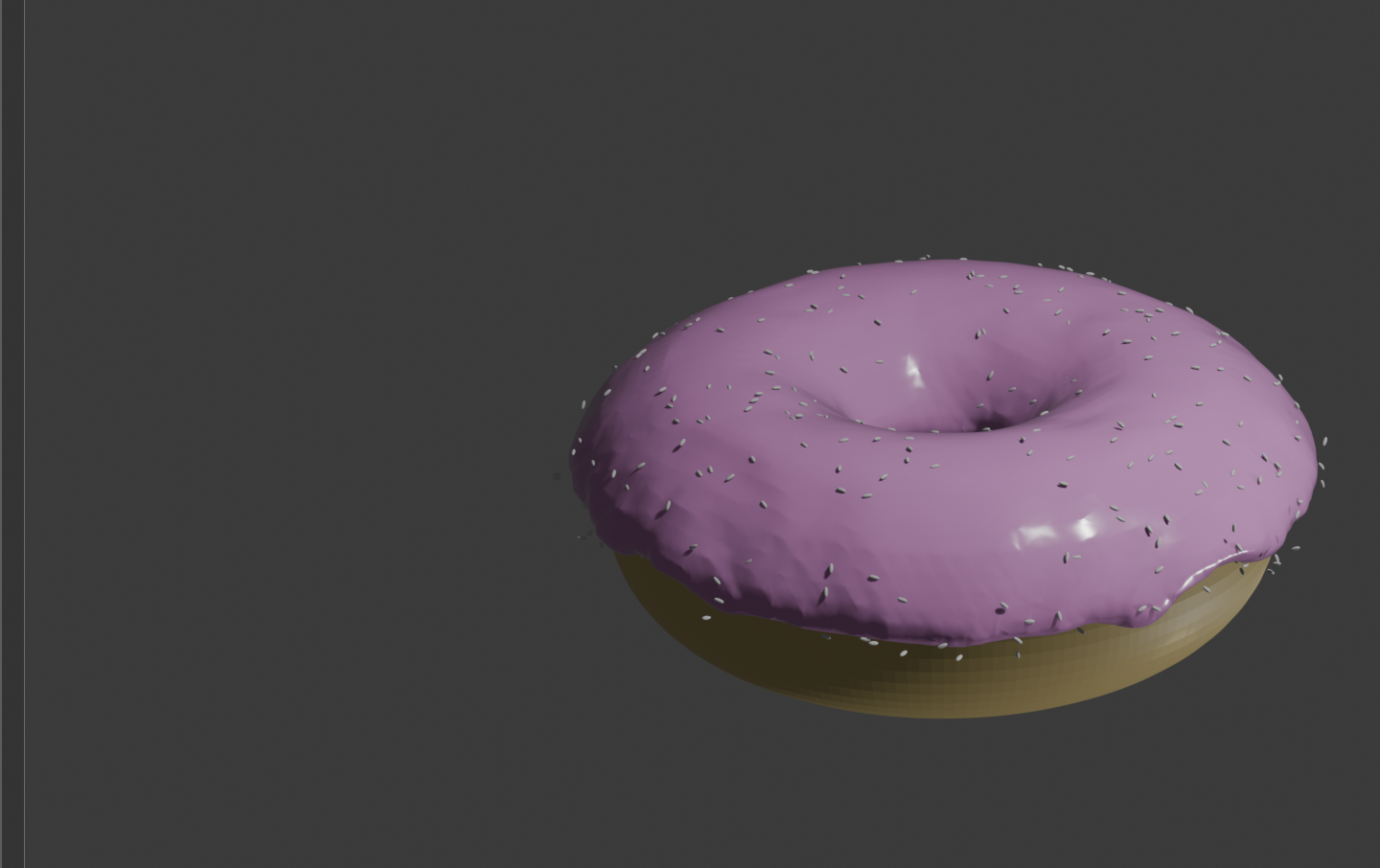
This was the final unfortunate outcome, a slightly sad sesame seed doughnut. I can take from it, a slightly deeper knowledge of Blender.
To compare the two, as someone who is by no means experienced with either softwares, of course Adobe Neo, was better to me. A lot of the reception for the Beta release boasts its simplicity, and it undoubtedly is simple by comparison. For the very experienced 3D modellers though however, I can see that Adobe Neo may seem limited or even 'too easy' and perhaps the ease may take away from the capabilities of the software in comparison to Blender or Cinema4D.
I still have a lot of curiosity with regards to what I can make through 3D modelling, and I know which software I will more happily reach for as someone who is a beginner. Neo's interface is more welcoming and more digestable, and it makes for a fun workflow, where possibilities aren't slowed by countless drop downs with numbers I don't understand and settings I can't visualise.
